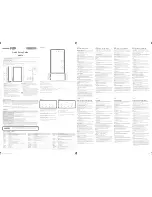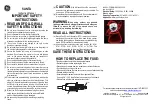
Maintenance
Manual_Grid_Power_FNC_en_V3_0
44
10.4.
Testing the Insulation Resistance
The insulation resistance of a battery is a measure of the conductivity. It results of moisture
and contamination of the battery between the battery poles and the chassis (rack/cabinet).
Ideally, no conduction should take place here if the insulation resistance of the battery is
infinitely large.
When commissioning a new battery, the insulation resistance must be > 1
MΩ. This value
falls with the operating time (caused by aerosols from the batteries, condensation and dust)
and, in accordance with DIN EN IEC 62485-2, it should not fall below the value of 100
Ω per
volt of nominal voltage.
Note
Minimum value for the battery system:
100
Ω x 1.2 V x number of cells of the battery connected in series.
For grid|power FNC
®
batteries, an insulation resistance measuring instrument with a test voltage
of 500 V/1000 V must be used (according to DIN VDE 0100-600).
Use a suitable measuring device, e.g., GOSSEN METRAWATT METRISO 5000 D-PI.
Nominal battery voltage
≤ 500 V = set the measuring device to 500 V/DC, 1 minute
Nominal battery voltage > 500 V = set the measuring device to 1000 V/DC, 1 minute
ATTENTION!
An insulation test voltage of 500 V/1000 V may damage other components connected to the
battery.
Disconnect the battery from the load if you measure the insulation resistance.
CAUTION!
While carrying out measurements with an insulation resistance measuring instrument there is the
risk of getting an electric shock.
Observe and follow the safety precautions described in the documentation of the insulation
resistance measuring instrument.
1. Measure the insulation resistance between plus pole of the battery and one metallic part
of the battery rack/cabinet or central earthing point.
2. Measure the insulation resistance between the minus pole and a metallic part of the
battery rack/cabinet or central earthing point.
3. Clean the battery system, if the measured values are lower than the minimum value (
see
10.5 Cleaning on page 45
4. Measure the insulation resistance again according to step 1 and 2.
5. Keep a log of your maintenance activities, see
13.2 Maintenance Log on page 57
















































